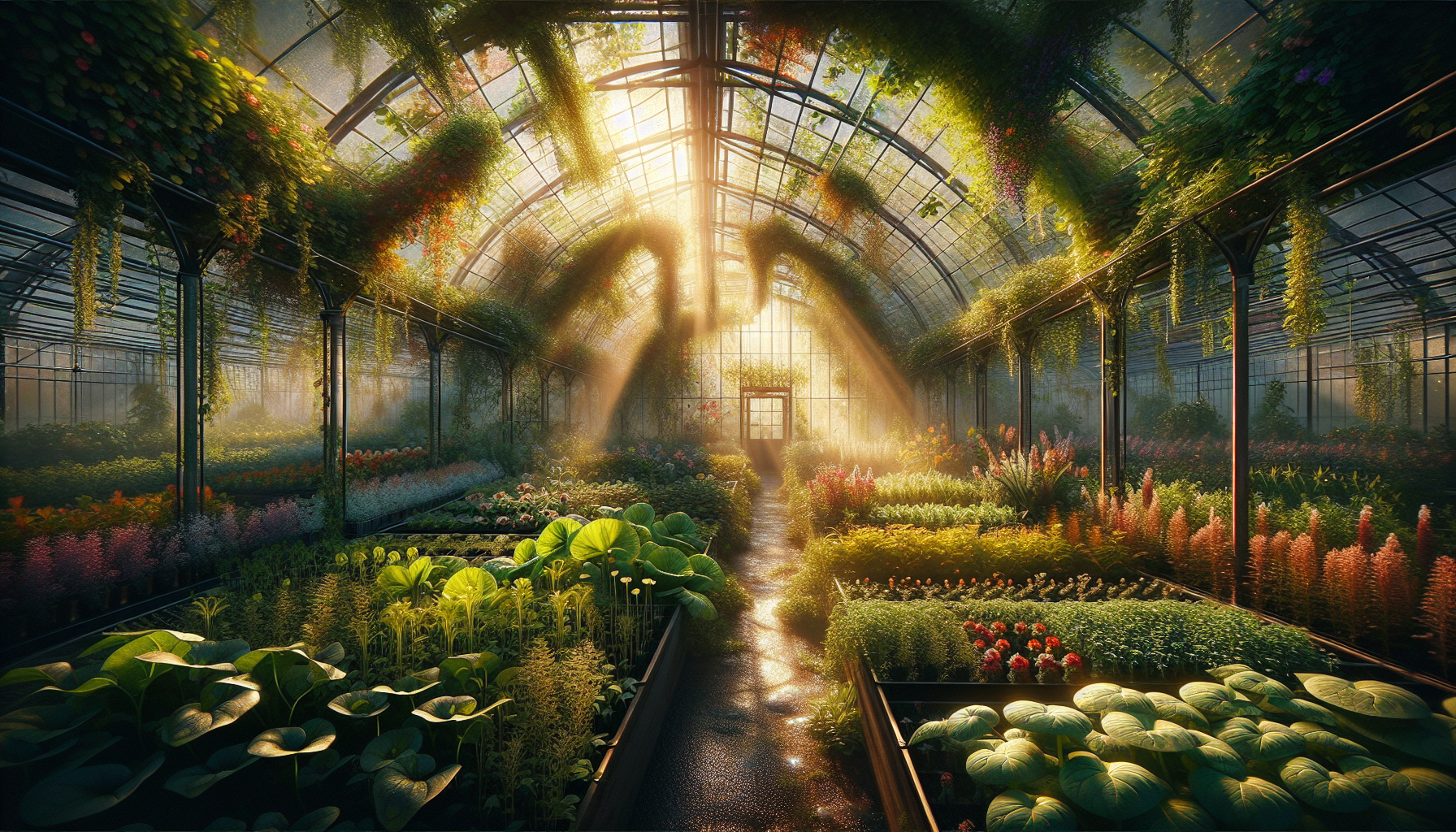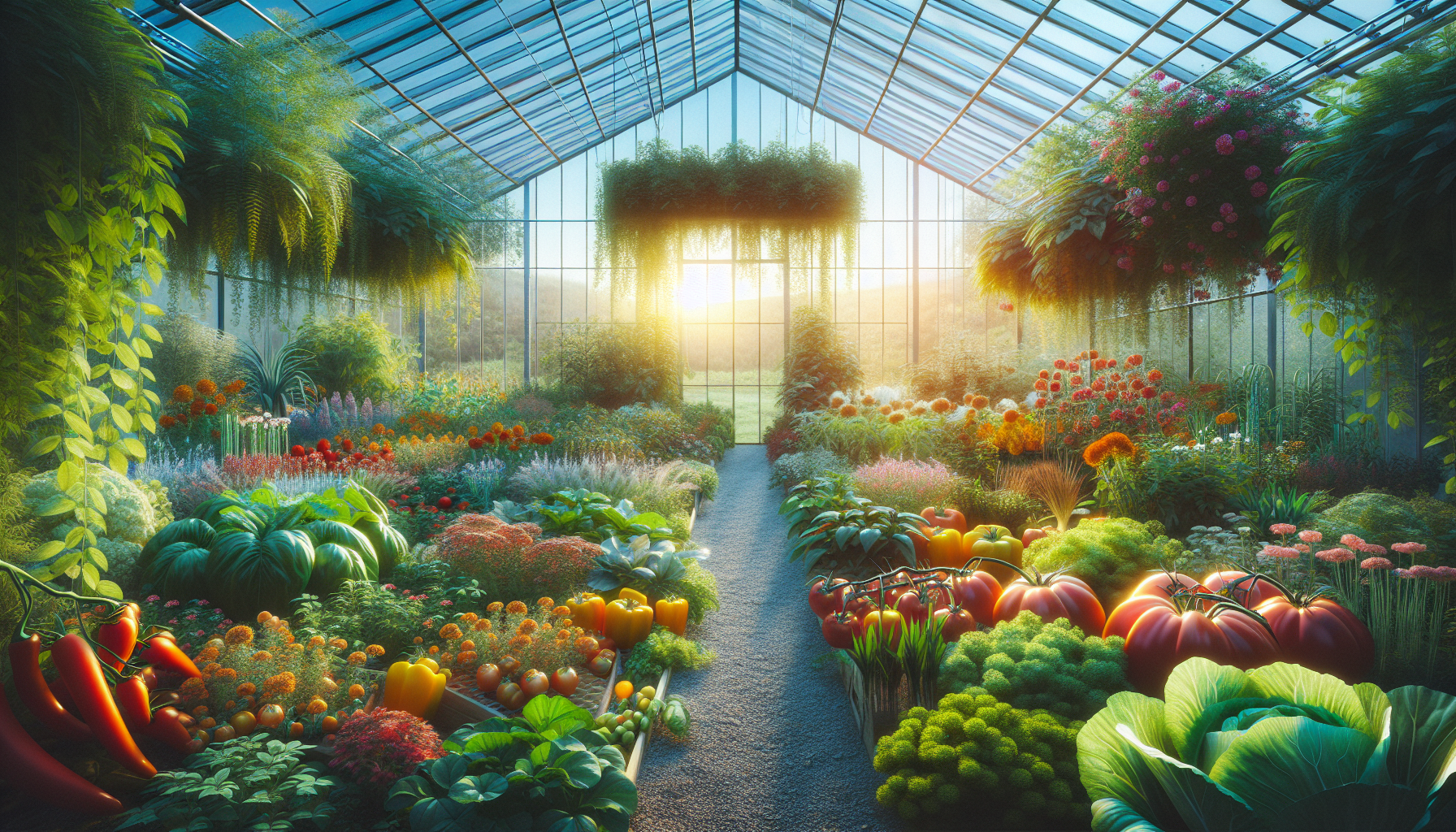
Imagine cultivating your own lush garden, where vibrant plants thrive year-round, regardless of the whims of the weather outside. “The greenhouse gardening Advantage” is your guide to unlocking this verdant world, right in your backyard. Greenhouse gardening offers a unique benefit, creating a controlled environment that allows you to extend growing seasons, protect delicate plants, and indulge in a wider variety of flora. This article will explore how embracing greenhouse gardening can elevate your horticultural experience, giving you the power to master the elements and harvest the bounty of nature any time you wish.
Understanding Greenhouse Gardening
Definition of Greenhouse Gardening
Greenhouse gardening refers to the practice of growing plants in a controlled environment. This environment is usually a structure made of glass or plastic, which allows sunlight to enter and warm the interior while protecting plants from extreme weather conditions. You’ll find that engaging in greenhouse gardening enables you to cultivate a wide variety of plants, often extending growing seasons, or even growing year-round, regardless of your local climate.
Different Types of Greenhouses
There are several different types of greenhouses you can choose from, depending on your needs, budget, and available space. These vary from small cold frames, which are suitable for hardening off seedlings, to large commercial structures. Hobby greenhouses are popular among home gardeners, and they come in various shapes, including the traditional peaked roof, dome, or lean-to designs. High-tech options with automated systems for temperature and humidity control cater to more serious growers and commercial operations.
Basic Components of a Greenhouse
Every greenhouse consists of several basic components that work together to create an optimal growing environment. The frame can be made from aluminum, steel, or wood, and supports a transparent covering, which is often glass or plastic. This covering is essential for trapping solar energy inside. Ventilation systems, either manual or automated, help control temperature and humidity. Additionally, heating and cooling systems, shading, benches, potting tables, and irrigation systems are often incorporated to provide your plants the best possible care.
Year-Round Cultivation
Extended Growing Seasons
One of the most significant advantages of greenhouse gardening is the ability to extend your growing seasons. You can start seedlings early in the spring and continue growing crops into the fall and winter months, regardless of frost dates. This means your gardening isn’t limited by the natural climate but rather by what you can simulate within your greenhouse environment.
Growing Tropical Plants in Cold Climates
Your gardening repertoire can expand to include exotic and tropical plants that wouldn’t survive in your outdoor garden. Greenhouses allow you to cultivate sensitive species by creating a microclimate that mimics their natural habitat. So avocados, bananas, or orchids can thrive even if you’re dealing with snow outside.
Succession Planting Opportunities
Greenhouses facilitate succession planting – the practice of planting new crops as soon as the previous ones have been harvested. This allows you to maximize the use of space and ensure a constant supply of fresh produce. With careful planning, you can enjoy a rotation of your favorite fruits and vegetables all year long.

Control Over Growing Conditions
Temperature Management
Maintaining the proper temperature is critical in greenhouse gardening. You have the ability to install heating systems to ward off the cold or use shading and ventilation to reduce excessive heat. This control ensures that your plants can grow even when outdoor temperatures would normally be inhospitable.
Monitoring Humidity Levels
Plants not only need the right temperature to thrive but also the correct humidity levels. Your greenhouse can be equipped with systems to either add moisture through misters or reduce humidity with ventilation. proper monitoring helps prevent issues related to mold and disease which can thrive in overly humid environments.
Control of Light Exposure
Controlling light exposure is another benefit you can enjoy. Some plants require long periods of daylight which can be in short supply during certain seasons. Greenhouses can be fitted with grow lights to supplement natural light, ensuring your plants receive the appropriate amount of light year-round.
Pest and Disease Management
Isolation from External Pests
One of the joys of greenhouse gardening is the physical barrier it provides against many pests found in the outdoor garden. By controlling access to your plants, you’re likely to encounter fewer issues with insects like aphids, caterpillars, and slugs, which can devastate outdoor plantings.
Reduced Risk of Soil-Borne Diseases
In a greenhouse, you can utilize sterilized potting mixes and employ hydroponic systems, reducing the risk of soil-borne diseases. These diseases can linger in the soil for years, but in your greenhouse, you can avoid them more effectively than in an open garden.
Ease of Implementing Pest Control Measures
When pests do make their way into your greenhouse, you’ll find it easier to control them in the confined space. Whether you opt for natural predators, such as ladybugs, or environmentally friendly treatments, addressing the issue is simpler and often more effective than with outdoor plantings.

Improved Plant Yield and Quality
Production of Larger, Healthier Plants
The controlled environment of a greenhouse provides an excellent setting for producing larger and healthier plants. Nutrient delivery can be more consistent, and because stress factors are reduced, your plants are able to grow stronger and more vibrant.
Ability to Grow Exotic Varieties
With the ability to tweak the growing conditions inside your greenhouse, you’re not limited to local plant varieties. You can experiment with exotic species that would otherwise not be possible in your region, adding diversity to your garden and your diet.
Predictable and High-Quality Yields
The controlled conditions also lead to more predictable and higher quality yields. Without the unpredictability of weather, pests, and diseases, you can enjoy consistent and abundant harvests that are often superior in quality to those grown outdoors.
Environmental Benefits
Water Conservation
Greenhouse gardening often uses less water than traditional gardening. With systems like drip irrigation or hydroponics, you can target the water directly to your plants’ roots with minimal waste.
Reduced Fertilizer Runoff
By being contained within a greenhouse, fertilizer use is more controlled, leading to reduced runoff. This not only saves you money on fertilizers but also protects local waterways from excess nutrients that can lead to algal blooms and aquatic ecosystem damage.
Contribution to Biodiversity
By growing a variety of plants, including rare and endangered species, you contribute to the preservation of biodiversity. Greenhouses can act as sanctuaries for plants that are under threat in their natural environments.
Economic Advantages
Savings on Grocery Bills
With the ability to grow your own produce year-round, you can save significantly on your grocery bills. Fresh herbs, vegetables, and fruits from your greenhouse can reduce the need to purchase these items from the store, where they are often more expensive and less fresh.
Potential Source of Income
If you grow more than you can consume, your greenhouse can become a source of income. Selling your surplus produce at farmers’ markets or to local restaurants can provide you with extra earnings.
Increased Property Value
A well-maintained greenhouse can also increase the value of your property. It’s an attractive feature for potential home buyers who might be interested in gardening or self-sufficiency, potentially making your home more marketable.
Health and Wellness Benefits
Access to Fresh and Nutritious Food
Having access to fresh, home-grown produce is excellent for your health. Plants grown in greenhouses can be harvested at peak ripeness, giving you the full spectrum of nutrients and flavors that might otherwise be lost in store-bought produce.
Therapeutic Activity
Gardening is widely recognized for its therapeutic benefits, and greenhouse gardening is no exception. It can reduce stress, provide a sense of achievement, and promote physical activity, all of which are essential for maintaining mental health.
Opportunities for Outdoor Learning and Recreation
Your greenhouse is a classroom in itself, offering opportunities for learning about botany, ecology, and nutrition. It’s also a space for recreation, where you and your family can spend quality time engaging with nature, regardless of the weather outside.
Reducing Carbon Footprint
Lower Transportation Costs and Emissions
Growing your own produce means less reliance on fruits and vegetables transported from far away. This reduction in food miles translates to lower transportation costs and emissions, contributing to environmental conservation.
Reduced Dependence on Commercial Farming
Commercial farming often involves practices that can be harmful to the environment, such as the use of heavy machinery and chemical inputs. Greenhouse gardening allows you to reduce your dependence on such practices by growing your own produce in a more sustainable manner.
Effective Use of Renewable Energy Sources
By equipping your greenhouse with solar panels or other renewable energy sources to power heating, cooling, and lighting systems, you can make your gardening efforts even more eco-friendly. The effective use of renewable energy helps reduce the overall carbon footprint of your food production.
Overcoming Challenges in Greenhouse Gardening
Addressing Initial Setup Costs
While the initial setup costs for a greenhouse can be significant, it’s crucial to view this as a long-term investment. There are options for every budget and, over time, the savings on groceries, potential income from selling produce, and increased property value can offset these costs.
Managing Internal Climate
Getting the climate inside your greenhouse just right can be challenging but is critical for plant health. Investing in quality monitoring and control equipment can make this task easier and more efficient, leading to better plant growth and savings on resources.
Dealing with Pest and Disease Outbreaks Inside the Greenhouse
Although reduced, the risk of pests and diseases is still present within a greenhouse. It’s important to have a plan for regular monitoring and fast action if an issue is detected. integrated pest management and proper sanitation practices can help minimize these threats.
Maintenance and Upkeep
Regular maintenance and upkeep of your greenhouse are essential for its successful operation. This includes cleaning, repairing any damages to structure or systems, and updating or replacing outdated equipment. With diligent care, your greenhouse can continue to perform at its best, giving you a sustainable and rewarding gardening experience.
Greenhouse gardening offers a wealth of benefits, from extended growing seasons and improved plant health to environmental advantages and economic rewards. While there are challenges to overcome, the advantages make it an attractive and fulfilling endeavor for many garden enthusiasts. Whether you’re looking to save on groceries, pursue a new hobby, or reduce your carbon footprint, the greenhouse gardening advantage is evident.

